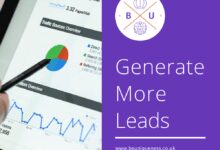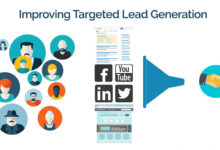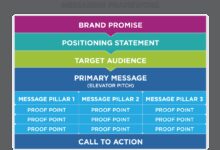Leads Bank Secrets: 7 Proven Strategies to Skyrocket Growth
In today’s hyper-competitive financial landscape, a leads bank isn’t just a tool—it’s a game-changer. Discover how top institutions leverage this powerhouse system to dominate markets and drive explosive growth.
What Is a Leads Bank and Why It Matters

A leads bank is more than just a digital repository for potential customer information—it’s a strategic asset that fuels sales pipelines, enhances marketing precision, and drives sustainable business growth. At its core, a leads bank collects, organizes, and manages prospective customer data gathered from various channels such as online forms, social media campaigns, webinars, and physical events. This centralized system allows financial institutions, real estate firms, insurance providers, and other service-based businesses to nurture prospects efficiently and convert them into loyal clients.
The importance of a leads bank lies in its ability to transform raw data into actionable intelligence. Instead of losing potential customers in fragmented spreadsheets or forgotten email inboxes, companies can use a leads bank to track interactions, segment audiences, and personalize outreach. According to Salesforce’s State of Sales Report, high-performing sales teams are 2.2 times more likely to use a centralized lead management system than underperformers.
Core Components of a Leads Bank
Every effective leads bank consists of several foundational elements that ensure data integrity, usability, and scalability. These components work together to create a seamless flow from lead acquisition to conversion.
Lead Capture Mechanisms: These include online forms, landing pages, chatbots, QR codes, and call tracking systems that collect initial prospect information.CRM Integration: A leads bank must sync with a Customer Relationship Management (CRM) platform like HubSpot, Salesforce, or Zoho to enable automated workflows and real-time updates.Data Enrichment Tools: Services like Clearbit or Hunter.io enhance basic lead data by adding job titles, company size, social profiles, and behavioral insights.How a Leads Bank Differs from Traditional Lead ListsWhile traditional lead lists are static and often outdated, a leads bank is dynamic and continuously evolving.Static lists typically contain names and contact details with no context or history, making follow-up inefficient.
.In contrast, a leads bank stores comprehensive profiles including interaction history, engagement scores, preferred communication channels, and even sentiment analysis from past conversations..
“A leads bank turns cold data into warm relationships by enabling context-driven engagement.” — Marketing Automation Expert, Lisa Chen
This level of detail allows sales and marketing teams to prioritize high-intent leads, personalize messaging, and reduce response time—critical factors in closing deals faster. For example, a mortgage lender using a leads bank can instantly identify which prospects have recently visited loan calculator pages and target them with tailored rate offers, significantly increasing conversion odds.
Benefits of Implementing a Leads Bank System
Organizations that adopt a structured leads bank experience measurable improvements across multiple business functions. From boosting sales productivity to enhancing customer retention, the advantages are both immediate and long-term.
Improved Lead Conversion Rates
One of the most significant benefits of a leads bank is its impact on conversion rates. By organizing leads based on behavior, demographics, and engagement levels, businesses can deploy targeted nurturing sequences that speak directly to individual needs. Research from HubSpot shows that segmented and personalized email campaigns generate 30% higher open rates and 50% more click-throughs compared to generic blasts.
For instance, a bank using a leads bank might categorize leads into segments such as ‘first-time homebuyers,’ ‘refinancing seekers,’ or ‘small business loan applicants.’ Each group receives customized content—e-books, video tutorials, or consultation invites—that aligns with their financial goals, increasing trust and conversion likelihood.
Enhanced Sales Team Efficiency
Sales representatives spend nearly one-third of their time searching for or updating customer data, according to a Nucleus Research study. A leads bank eliminates this inefficiency by providing instant access to verified, enriched lead profiles. With all relevant information at their fingertips—past interactions, preferred contact methods, and buying stage—sales agents can focus on selling rather than data mining.
Moreover, automated lead scoring within a leads bank helps prioritize outreach. High-scoring leads (those who’ve downloaded whitepapers, attended webinars, or requested quotes) are flagged for immediate follow-up, ensuring no opportunity slips through the cracks.
Scalability and Long-Term Growth
As businesses grow, managing leads manually becomes unsustainable. A leads bank scales effortlessly with increasing data volume, supporting regional expansion, product diversification, and multi-channel marketing. Whether a fintech startup is onboarding 100 new leads per month or a multinational bank handles millions annually, a robust leads bank adapts without compromising performance.
Cloud-based platforms like Microsoft Dynamics 365 or Oracle Eloqua offer enterprise-grade leads banks capable of handling complex workflows, AI-driven analytics, and global compliance requirements. This scalability ensures that customer acquisition strategies remain agile and data-driven, even during rapid growth phases.
How to Build a High-Performance Leads Bank
Constructing an effective leads bank requires careful planning, the right technology stack, and alignment between marketing, sales, and IT departments. The process involves defining objectives, selecting tools, designing workflows, and establishing governance policies.
Step 1: Define Your Lead Acquisition Channels
The first step in building a leads bank is identifying where your leads will come from. Common sources include:
- Website contact forms and live chat
- Social media advertising (Facebook, LinkedIn, Instagram)
- Email marketing campaigns
- Webinars and virtual events
- Offline events and trade shows
- Referral programs and partner networks
Each channel should have a standardized method for capturing lead data and feeding it into the central leads bank. For example, integrating Facebook Lead Ads with a CRM via Zapier ensures real-time synchronization, reducing data loss and delays.
Step 2: Choose the Right Technology Platform
Selecting the appropriate software is critical to the success of your leads bank. Key considerations include integration capabilities, ease of use, automation features, and security compliance.
Popular platforms include:
- Salesforce: Ideal for large enterprises needing advanced customization and analytics.
- HubSpot CRM: Best for mid-sized businesses seeking user-friendly automation and marketing tools.
- Zoho CRM: Cost-effective solution for startups and small teams.
- Marketo: Powerful for B2B companies running complex lead nurturing campaigns.
When evaluating options, ensure the platform supports API access, GDPR/CCPA compliance, and mobile accessibility. A case study from Salesforce customers shows that organizations using integrated CRM systems see a 41% increase in lead conversion within the first year.
Step 3: Design Data Capture and Segmentation Rules
Once the platform is chosen, define how leads will be captured and categorized. This includes setting up form fields, dropdown menus, and conditional logic to gather accurate and relevant information.
For example, a leads bank for an insurance company might ask:
- What type of coverage are you seeking? (Auto, Home, Life)
- What is your current provider?
- When does your policy expire?
Based on responses, leads are automatically tagged and routed to the appropriate department. Advanced systems use machine learning to predict lead intent and assign scores, enabling smarter prioritization.
Integrating a Leads Bank with CRM and Marketing Automation
A standalone leads bank has limited value. Its true power emerges when seamlessly integrated with CRM and marketing automation systems. This integration creates a closed-loop ecosystem where every touchpoint—from first click to final sale—is tracked, analyzed, and optimized.
Synchronizing Data Across Platforms
Data silos are one of the biggest obstacles to effective lead management. Without integration, marketing may run campaigns without knowing which leads have already been contacted by sales, leading to duplication and poor customer experience.
Using middleware tools like Zapier, Tray.io, or native APIs, businesses can synchronize their leads bank with CRM and email platforms in real time. For example:
- A lead fills out a loan inquiry form on a bank’s website.
- The data is instantly pushed to the leads bank and CRM.
- Within seconds, an automated email is sent with a pre-qualification checklist.
- The lead’s activity (opens, clicks, downloads) is logged and used to adjust their engagement score.
- If the score exceeds a threshold, a sales rep is notified for immediate follow-up.
This level of automation reduces response time from days to minutes, dramatically improving conversion odds.
Automated Nurturing Workflows
Marketing automation supercharges a leads bank by delivering personalized content at scale. Instead of sending the same message to everyone, automated workflows adapt based on lead behavior and profile attributes.
For example, a leads bank for a credit card company might trigger different email sequences based on credit score range:
- Leads with excellent credit receive offers for premium travel cards.
- Those with fair credit are guided toward secured cards with credit-building benefits.
- Inactive leads are re-engaged with educational content about improving credit health.
According to MarketingProfs, companies using automated nurturing see a 45% increase in qualified leads compared to manual outreach.
Real-Time Analytics and Reporting
Integrated systems provide real-time dashboards that track key performance indicators (KPIs) such as lead volume, conversion rate, cost per acquisition, and sales cycle length. These insights help marketers refine campaigns and sales leaders forecast revenue more accurately.
Advanced analytics can also identify bottlenecks—like a high drop-off rate after the first follow-up call—prompting process improvements. Some platforms even use AI to recommend optimal follow-up times or suggest next-best actions for each lead.
Best Practices for Managing and Nurturing Leads in a Leads Bank
Collecting leads is only half the battle. The real challenge lies in managing them effectively and nurturing them until they’re ready to buy. Poorly managed leads go cold, resulting in wasted marketing spend and missed revenue opportunities.
Implement Lead Scoring Models
Lead scoring assigns numerical values to prospects based on demographic fit and engagement behavior. This helps teams distinguish between tire-kickers and serious buyers.
A typical scoring model includes:
- Demographic Points: Job title (+10), company size (+15), industry relevance (+20)
- Behavioral Points: Website visit (+5), whitepaper download (+10), webinar attendance (+25), pricing page view (+30)
Once a lead reaches a predefined threshold (e.g., 70 points), they are marked as “sales-ready” and passed to the sales team. This ensures that reps focus on high-potential prospects, improving efficiency and close rates.
Personalize Communication at Scale
Generic messaging fails in today’s personalized economy. A leads bank enables hyper-personalization by leveraging stored data to tailor every interaction.
Examples include:
- Using the lead’s name and company in emails
- Referencing past content downloads (“Since you enjoyed our guide on mortgage rates…”)
- Offering location-specific promotions (“We have a branch near downtown Chicago—would you like to schedule a visit?”)
Personalization boosts engagement and builds trust. A study by Experian found that personalized subject lines increase open rates by 26%, while personalized offers generate 6x higher transaction rates.
Regularly Clean and Update Your Leads Bank
Data decay is a silent killer of lead quality. Studies show that up to 30% of B2B contact information becomes outdated each year. To maintain a healthy leads bank, implement regular data hygiene practices:
- Schedule quarterly audits to remove duplicates and invalid entries
- Use email verification tools like NeverBounce or ZeroBounce
- Re-engage inactive leads with reactivation campaigns
- Update job changes or company moves using LinkedIn integration
A clean leads bank improves deliverability, reduces bounce rates, and ensures compliance with anti-spam regulations like CAN-SPAM and GDPR.
Common Challenges and How to Overcome Them
Despite its benefits, implementing a leads bank comes with challenges. Addressing these proactively ensures long-term success and maximizes return on investment.
Data Quality and Incomplete Information
One of the most common issues is poor data quality—leads with missing phone numbers, fake emails, or incorrect job titles. This undermines trust and hampers follow-up efforts.
Solutions include:
- Using double opt-in forms to verify email addresses
- Implementing smart form fields that auto-detect and correct typos
- Integrating with data enrichment services like Clearbit or Lusha
Additionally, minimizing form length increases completion rates. A Unbounce study found that shortening forms from 11 to 4 fields increased conversions by 120%.
Sales and Marketing Alignment
Often, sales teams complain that marketing delivers unqualified leads, while marketers feel sales doesn’t follow up properly. This disconnect stems from misaligned goals and definitions of a “qualified lead.”
To bridge the gap:
- Establish a Service Level Agreement (SLA) between departments
- Define clear criteria for Marketing Qualified Leads (MQLs) and Sales Qualified Leads (SQLs)
- Hold joint review meetings to assess lead quality and conversion rates
When both teams share accountability, collaboration improves and lead handoff becomes smoother.
Technology Overload and Integration Complexity
With dozens of tools available, businesses risk creating a fragmented tech stack that’s hard to manage. Too many platforms lead to data inconsistencies and increased training needs.
Best practices:
- Start with a core platform (e.g., HubSpot or Salesforce) and add integrations gradually
- Use middleware like Zapier to connect non-native apps
- Assign a dedicated operations manager to oversee system health
Simplicity and cohesion trump feature overload. A streamlined leads bank with reliable integrations outperforms a complex, unstable system every time.
Future Trends in Leads Bank Technology
The future of leads banks is shaped by artificial intelligence, predictive analytics, and deeper personalization. As customer expectations evolve, so must lead management strategies.
AI-Powered Lead Prediction and Routing
Advanced AI algorithms can now predict which leads are most likely to convert based on historical data patterns. These systems analyze thousands of data points—from website behavior to social media activity—to generate predictive scores.
Moreover, AI can automatically route leads to the best-suited sales representative based on expertise, past success rates, and workload. For example, a lead interested in commercial real estate loans might be assigned to a specialist with a 75% close rate in that niche.
Companies like InsideSales.com already offer AI-driven platforms that increase lead response efficiency by up to 40%.
Hyper-Personalization Through Behavioral Data
Future leads banks will go beyond basic demographics to incorporate real-time behavioral signals. This includes:
- Page scroll depth and time spent on content
- Video engagement (how much of a product demo was watched)
- Chatbot interaction patterns
By analyzing these micro-behaviors, systems can infer intent and emotional state, enabling ultra-personalized messaging. For instance, a lead who repeatedly views mortgage comparison charts but hesitates to submit a form might receive a chatbot message: “Need help deciding? Let’s talk to a loan advisor now.”
Blockchain for Secure Lead Verification
As data privacy concerns grow, blockchain technology offers a promising solution for secure, transparent lead verification. By storing lead consent and interaction history on a decentralized ledger, businesses can prove compliance with GDPR and CCPA while preventing fraud.
While still in early stages, pilot programs by financial institutions show that blockchain-based leads banks reduce fake lead submissions by up to 60% and improve audit readiness.
What is a leads bank?
A leads bank is a centralized digital system that collects, stores, and manages prospective customer information from various sources. It enables businesses to organize, score, and nurture leads efficiently, improving conversion rates and sales productivity.
How does a leads bank improve sales performance?
By providing real-time access to enriched lead profiles, automating follow-ups, and enabling precise targeting, a leads bank helps sales teams prioritize high-intent prospects, reduce response time, and close deals faster.
Can small businesses benefit from a leads bank?
Absolutely. Even small businesses generate leads from multiple channels. A leads bank ensures no opportunity is lost, improves customer experience through personalization, and scales as the business grows.
What are the key features to look for in a leads bank platform?
Look for CRM integration, automation capabilities, lead scoring, data enrichment tools, mobile access, and compliance with data protection regulations like GDPR.
How often should a leads bank be cleaned and updated?
It’s recommended to audit and clean your leads bank at least quarterly. Regular maintenance ensures data accuracy, improves deliverability, and maintains regulatory compliance.
Building and maintaining a powerful leads bank is no longer optional—it’s essential for any organization serious about growth. From improving conversion rates to enabling AI-driven personalization, a well-managed leads bank transforms how businesses acquire and retain customers. By following best practices in data collection, integration, and nurturing, companies can unlock unprecedented levels of efficiency and revenue. As technology evolves, the leads bank will continue to play a central role in shaping the future of customer acquisition.
Further Reading:



